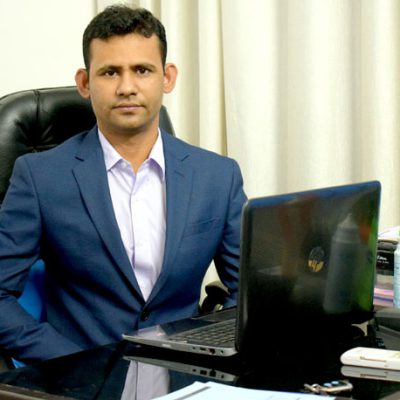The respiratory rehabilitation program is a multidimensional medical treatment implemented by a multidisciplinary and multidisciplinary team, aimed at patients with symptomatic chronic respiratory pathology. It consists of an individualized strategy for each patient, comprehensive, which aims to decrease dyspnea (shortness of breath) and improve breathing, increase tolerance to effort, social participation and quality of life, associated with a reduction in the costs of care. health and a reduction in the set of factors that contribute to the natural evolution of the disease. It includes assessment, education, nutritional guidance, psychological support, and the exercise program.
It is now recognized that respiratory rehabilitation programs are a component of the non-pharmacological treatment of respiratory pathology in patients who remain symptomatic despite the adequate institution of drug therapy.
The complexity of respiratory diseases, namely chronic obstructive pulmonary disease, is known with regard to its pathophysiology, manifestations in other organs and systems besides the lung and association with other pathologies. Respiratory pathology and its multiple co-morbidities may be responsible for respiratory symptoms such as dyspnoea (shortness of breath), cough and abundant and difficult to eliminate sputum and tiredness in daily activities that contribute to the evolution of the initial disease. The patient gradually loses autonomy and quality of life.
The respiratory rehabilitation program is a treatment through which the different health professionals, in a multidisciplinary team, address the different components of the disease: physical, cognitive, psycho-emotional and social. They work together to teach the disease and the risk factors that can lead to its worsening, educate for the promotion of healthy lifestyle habits, promote the realization of respiratory physiotherapy also known as respiratory kinesiotherapy, the training of physical exercise appropriate to the cardiorespiratory function and other coexisting pathologies, the patient’s health, and physical condition.
The latest international recommendations consider that any patient with the pathology of the respiratory system and who presents with respiratory symptoms can be a candidate for this intervention, namely patients with: chronic obstructive pulmonary disease (COPD), bronchial asthma, bronchiectasis, cystic fibrosis, interstitial lung disease, kyphoscoliosis, post-ARDS status, sequelae of pulmonary tuberculosis, pulmonary hypertension and pre- and postoperative lung cancer, thoracic surgery, and lung transplantation.
Respiratory physiotherapy indications
Respiratory physiotherapy or respiratory kinesiotherapy can be performed in patients with chronic obstructive pulmonary disease, bronchiectasis, cystic fibrosis, bronchiolitis and in the pre- and postoperative period of cardio-thoracic and upper abdominal surgery, among other pathologies.
It can be performed alone or integrated into the respiratory rehabilitation program and brings together a set of techniques selected according to the medical diagnosis, the patient’s clinical condition, and the existing ventilatory limitation, with the aim of improving breathing, promoting the elimination of sputum and decreasing anxiety.
It includes teaching abdominal-diaphragmatic breathing and breathing with semi-closed lips that can help the patient to control and decrease dyspnea and the sensation of panic associated with symptoms, by improving the ventilatory pattern (decrease in respiratory rate and increased tidal volume), preventing the collapse of the airways and synchronizing abdominal breathing and chest breathing.
Teaching techniques to improve bronchial hygiene is essential in patients who have difficulty mobilizing respiratory secretions and eliminating them through coughing.
Respiratory physiotherapy can be performed on adults and children, both children and babies.
Respiratory physiotherapy techniques

Respiratory physiotherapy or respiratory kinesiotherapy gathers a set of techniques, exercises, and maneuvers that are prescribed according to the diagnosis, condition and clinical evolution of the patient, namely:
Techniques to improve ventilatory mechanics:
These techniques involve the 3 components of breathing: the lung, the rib cage, and the respiratory muscles. They are based on the performance of abdominal-diaphragmatic and costal breathing and aim to improve lung function, muscle function, and chest mobility. They use high respiratory volumes generated by the patient during inspiration or during exhalation, which leads to a desirable increase in respiratory pressures. They also allow to decrease the respiratory rate, increase the tidal volume and improve gas exchange in the lung.
Techniques to facilitate the elimination of respiratory secretions :
- Postural drainage – uses the force of gravity to facilitate the drainage of secretions into the central pathways and subsequent expulsion through coughing or aspiration;
- Vibrations – are oscillatory movements applied to the chest wall by the technician’s hand;
- Positive expiratory pressure – It is a simple technique that the patient can perform alone at home with small portable equipment.
These last 2 methods (vibration and flutter) can produce a high-frequency vibration that helps to release secretions from the bronchial walls.
Improving the effectiveness of cough: includes teaching the patient how to cough and how to improve the ability to produce a cough. Includes assisted cough, self-assisted cough, directed cough, and Huffing;
Relaxation techniques: reduce anxiety caused by the sensation of dyspnea and the energy cost of breathing and lead to an increase in well-being.
Incentive spirometry and expiratory flutter are small, portable equipment, easy to use and transport that allows the patient during training to increase inspiratory or expiratory flow, depending on the equipment used. The repetition of these exercises can improve respiratory pressures and, in the case of expiratory flutter, facilitate the elimination of sputum.
Depending on the model, the equipment may include a valve that prints a resistance with an appropriate threshold to the patient’s inspiratory or expiratory pressure, adjustable according to the intended objective.
Physical activity after a respiratory rehabilitation program
Respiratory rehabilitation alters life habits and risk factors for the evolution of lung disease, in a process that must continue beyond the treatment period. Patients are advised to maintain regular physical activity promoting a healthy lifestyle. It is advisable to continue walking or exercise on a bicycle complemented with the exercises indicated to be performed at home after the respiratory rehabilitation program has ended.
In this way, the patient who finishes the respiratory rehabilitation program and wants to continue to improve his breathing to prolong the benefits of the rehabilitation program must continue to do daily exercises as indicated, as well as all the strategies learned during the treatment period.

